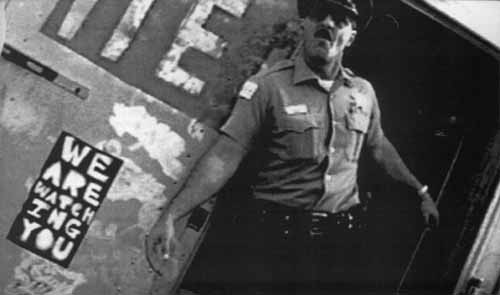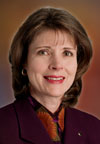
By Alex Constantine
Research Assistance by Team8
http://www.mipt.org/darkwinter06222001.asp
JUNE 6, 2001 - DARK WINTER - NPR's "Morning Edition" ...
[... FX down ... ] This exercise was made possible by grant funding from The McCormick Tribune Foundation and The Oklahoma City National Memorial Institute for the Prevention of Terrorism ...
On 22-23 June, 2001, the Center for Strategic and International Studies, the Johns Hopkins Center for Civilian Biodefense Studies, the ANSER Institute for Homeland Security, and the Oklahoma City National Memorial Institute for the Prevention Terrorism, hosted a senior-level war game examining the national security, intergovernmental, and information challenges of a biological attack on the American homeland.

“DARK WINTER”was developed and produced by:
The ANSER Institute for Homeland Security
Contact: Col. Randy Larsen (Ret.), Director
The Center for Strategic and International Studies
Contact: Dr. John Hamre, President & CEO
The Johns Hopkins Center for Civilian Biodefense Studies
The Oklahoma City National
Memorial Institute for the Prevention of Terrorism

With tensions rising in the Taiwan Straits, and a major crisis developing in Southwest Asia, a smallpox outbreak was confirmed by the CDC in Oklahoma City. During the thirteen days of the game, the disease spread to 25 states and 15 other countries. Fourteen participants and 60 observers witnessed terrorism/warfare in slow motion. ... Additionally, a predictable 24/7 news cycle quickly developed that focused the nation and the world on the attack and response. Five representatives from the national press corps (including print and broadcast) participated in the game, including a lengthy press conference with the President. ...
SCENARIO OVERVIEW
DARK WINTER was an exercise designed to simulate possible US reaction to the deliberate introduction of smallpox in three states during the winter of 2002.
KEY PLAYERS: Jerome Hauer, Judith Miller, Sam Nunn, David Gergen, R. James Woolsey, John White, John Tilelli (USA, Ret.), Frank Wisner, George Terwilliger, William Sessions, Frank Keating, Dan Mahoney, Jim Miklaszewski, Mary Walsh, Sian Edwards (reporter), Lester Reingold (reporter)
EXERCISE STAFF
Mr. John Wohlfarth - Research Analyst, ANSER Institute for Homeland Security, Analytic Services Inc. (ANSER)
Col. Randall Larsen (USAF, Ret.) - Director, ANSER Institute for Homeland Security Analytic Services Inc. (ANSER)
Ms. Joyce Whiting - ANSER Institute for Homeland Security
Analytic Services Inc. (ANSER)
Mr. Mark DeMier - Editor-in-Chief, The Journal of Homeland Security
Analytic Services Inc. (ANSER)
John Hamre, President and CEO, Center for Strategic & International Studies
Ms. Sue Reingold - Visiting National Security Agency Fellow
Center for Strategic & International Studies
Mr. Robertson Gile - Research Assistant, Center for Strategic & International Studies
Tara O'Toole - Deputy Director, Johns Hopkins Center for Civilian Biodefense Studies
Dr. Thomas Inglesby - Senior Fellow, Johns Hopkins Center for Civilian Biodefense Studies
Mr. Michael Mair - Fellow, Johns Hopkins Center for Civilian Biodefense Studies
The players were introduced to this crisis during a National Security Council meeting scheduled to address several emerging crises, including the deployment of a carrier task force to the Middle East. At the start of the meeting, the Director of Health and Human Services informed the President of a confirmed case of smallpox in Oklahoma City. Additional smallpox cases were soon identified in Georgia and Pennsylvania. More cases appeared in Oklahoma. The source of the infection was unknown, and exposure was presumed to have taken place at least nine days earlier due to the lengthy incubation period of smallpox. Consequently, exposed individuals had likely traveled far from the loci of what was now presumed to be a biological attack. The exercise spanned 13 days, and served as a vehicle to illustrate the following points.
EXERCISE LEARNING POINTS
1) An attack on the United States with biological weapons could threaten vital national security interests. Massive civilian casualties, breakdown in essential institutions, violation of democratic processes, civil disorder, loss of confidence in government and reduced US strategic flexibility abroad are among the ways a biological attack might compromise US security.
2) Current organizational structures and capabilities are not well suited for the management of a BW attack. Major “fault lines” exist between different levels of government (federal, state, and local), between government and the private sector, among different institutions and agencies, and within the public and private sector. These “disconnects” could impede situational awareness and compromise the ability to limit loss of life, suffering, and economic damage.
3) There is no surge capability in the US health care and public health systems, or the pharmaceutical and vaccine industries. This institutionally limited surge capacity could result in hospitals being overwhelmed and becoming inoperable; could impede public health agencies’ analysis of the scope, source and progress of the epidemic, the ability to educate and reassure the public, and the capacity to limit causalities and the spread of disease.
4) Dealing with the media will be a major, immediate challenge for all levels of government. Information management and communication (e.g., dealing with the press effectively, communication with citizens, maintaining the information flows necessary for command and control at all institutional levels) will be a critical element in crisis/consequence management.
5) Should a contagious bioweapon pathogen be used, containing the spread of disease will present significant ethical, political, cultural, operational and legal challenges.
SMALLPOX, because of its high case-fatality rates and transmissibility, represents one of the most serious biological warfare threats to the civilian population. In 1980, the World Health Assembly announced that smallpox had been eradicated and recommended that all countries cease vaccination. Although labs in two countries still officially store smallpox samples (US and Russia), its re-appearance would almost certainly indicate an intentional outbreak.
Aerosol release of smallpox virus disseminated among a relatively small population could result in a significant epidemic. Evidence suggests the infectious dose is very small. Several factors are cause for concern: the disease has historically been feared as one of the most serious of all pestilential diseases; it is physically disfiguring; it bears a 30 percent case-fatality rate; there is no treatment; it is communicable from person to person. Vaccination ceased in this country in 1972, and vaccination immunity acquired before that time has undoubtedly waned. Prior to eradication, data on smallpox outbreaks in Europe indicated that victims had the potential to infect 10 to 20 others. However, there has never been a smallpox outbreak in such a densely populated, highly mobile, unvaccinated population such as exists today.
In 1947, in response to a single case of smallpox in New York City, 6,350,000 people were immunized (500,000 in one day), including President Harry Truman. In 1972, after disappearing from Yugoslavia for four decades, a single case of smallpox emerged. There are two ways to control a smallpox epidemic – vaccine and isolation. Yugoslavia’s Communist leader, Josip Tito, used both. He instituted a nation-wide quarantine, and immunized the entire country of 20 million people using vaccine supplied by the World Health Organization.
Estimates of the current US supply of smallpox vaccine range from seven to twelve million doses. This stock cannot be immediately replenished, since all vaccine production facilities were dismantled after 1980, and renewed vaccine production is estimated to require at least 24-36 months. The Centers for Disease Control and Prevention recently contracted with a Cambridge, MA firm to produce 40 million doses of new vaccine. Initial deliveries will not begin before 2004.
SOME OF THE EXERCISE OBSERVERS

Dr. Ruth David - President and CEO, Analytic Services Inc. (ANSER)
Mr. Jeffrey Fuller - Manager, Regional Conflict Division, Analytic Services Inc. (ANSER)
Dr. Peter Roman - Chairman, Department of Political Science at Duquesne University and Senior Fellow at the ANSER Institute for Homeland Security
Henry St. Germain - Senior Consultant, Analytic Services Inc. (ANSER)
Mr. Frank Cilluffo - Deputy Director, Global Organized Crime Project
Center for Strategic & International Studies
Dr. Anthony Cordesman - The Arleigh A. Burke Chair in Strategy
Center for Strategic & International Studies
Mr. Richard Saunders - Principal, Booz-Allen & Hamilton, Inc.
Mr. Skip Fischer - Legislative Assistant Office of Senator Jon Kyl
Dr. James Hodge - Project Director , Center for the Law & the Public's Health, Johns Hopkins and Georgetown Universities
Dr. Monica Schoch-Spana - Medical Anthropologist & Research Associate, Johns Hopkins Center for Civilian Biodefense Studies
Mr. John Sirek - Director, Citizenship Program, Robert R. McCormick Tribune Foundation
Mr. Joseph Jakub - Staff Member, House Permanent Select Committee on Intelligence
COL Robert Kadlec, MD - Professor of Military Strategy and Operations, National War College
Dr. Scott Lillibridge - Director, Bioterrorism Preparedness Program
Centers for Disease Control
Mrs. Barbara Martinez 0 Chief, WMD Operations Unit, Federal Bureau of Investigation
Dr. Paula Olsiewski - Program Director, Alfred P. Sloan Foundation




